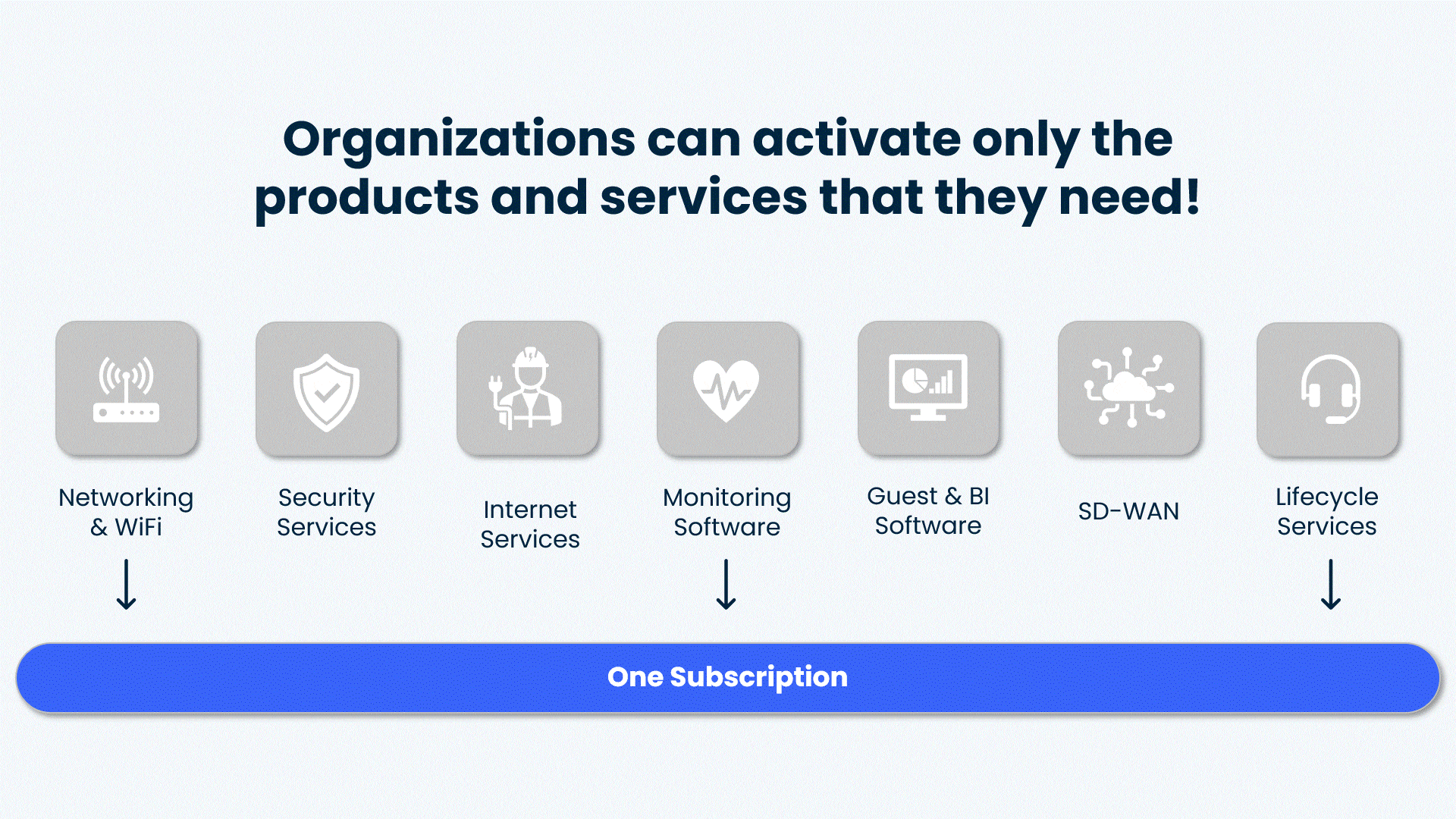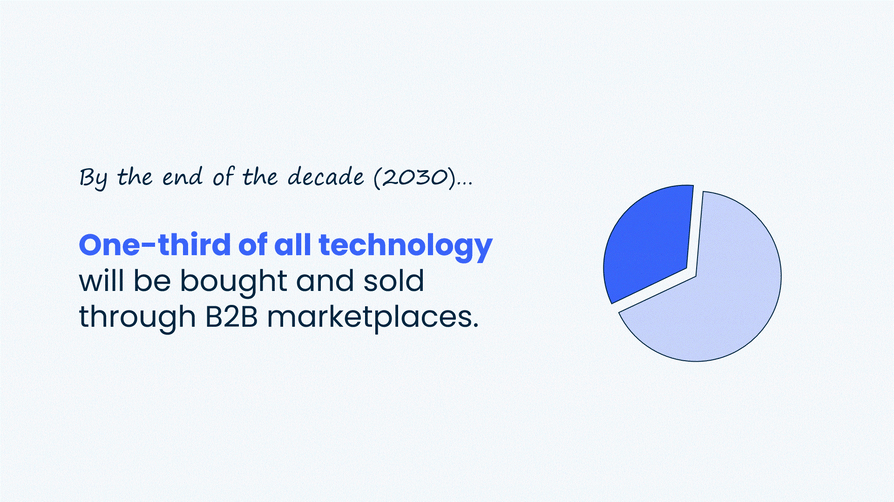If you want to learn about Network as a Service (NaaS), you couldn’t have come to a better place.
When we started working on bringing the "as a Service" experience to the enterprise networking industry over seven years ago, there weren’t many resources available on the subject.
To be honest, the abundance of confusing terms for Network as a Service, like WiFi as a Service and Connectivity as a Service make it challenging for businesses to understand what it is and how it works.
While it's easier to find info on the subject today, what’s not so easy is finding content that’s organized and creates a holistic starting point for anyone looking to start their Network as a Service journey.
That’s why we created this guide. Whether you’re an SMB retailer just getting started, an enterprise retail franchise with 1,000 locations, or even an MSP, VAR, or integrator looking to sell as a Service, this page will serve as your primary entrance into the world of NaaS.
What is Network as a Service?
Network as a Service (NaaS) is a utility-like subscription model that enables the flexible consumption of network infrastructure—including hardware, software, management tools, licenses, internet access, and lifecycle services.
Businesses can activate only the services that they need and orchestrate service delivery on an outcome basis—without having to own, build, or maintain their network infrastructure.
How does NaaS work?
Since Network as a Service (NaaS) is a new business model, there are a lot of different ways that companies in the IT industry are currently trying to make sense of it.
When we set out to solve the question of “How do you deliver a network on subscription” we knew we didn’t want to reinvent the wheel if we didn’t have to.
And in order to do that we looked to cloud computing for guidance.
Analyzing the cloud computing business models from companies like Amazon Web Services (AWS) and Microsoft Azure, we found that even though a server is included with your solution, when you’re buying cloud computing you’re not actually buying the infrastructure, you’re buying the outcomes that you need.
For example, when you buy electricity at your house — you’re not paying for the equipment that goes on the side of your house, you just receive power so you can do things like watch tv, heat your house, or keep your food cold.
This means that NaaS is NOT about financing a single piece of hardware (although it should be included in your subscription), its about receiving the connectivity you need to do things like securely accessing the web, providing online testing, tracking inventory, receiving payments, or doing payroll to name some examples.
In addition, if we are basing the requirements of NaaS on the cloud model, the characteristics would include:
What’s included with Network as a Service?
As the name suggests, Network as a Service is all about—the network. Everything you need to operate a high-performing, secure business WiFi network is available.
Here is a high-level breakdown of the different products and services available with NaaS:
- Apps (software)
- Hardware and Licensing
- Devices
- Installation materials
- Networking
- Network management
- Network security
- Performance monitoring
- SD-WAN
- Switching
- WiFi
- Power
- Internet Services
- Professional Services (i.e. network design, configuration, installation etc.)
With Network as a Service, you receive the outcomes you want by activating only the products and services that you need.
What this means is that your subscription service can include any combination of hardware and services that you need.

For example, if you already upgraded your pipe from the ISP but you need everything else, then you will receive a subscription for everything minus internet services.
Or if you just refreshed your access points and switching but you still need firewalls then you would purchase a subscription that includes firewalls.
NaaS gives you the flexibility to build a subscription that provides the most value for your business.
What are some examples of NaaS?
Organizations of every type, size, and industry are using Network as a Service to make their networks simple, smart, and secure.
Major industries include enterprise business, K-12 education, higher education, large public venues, insurance, industrial, warehousing, and healthcare.
But let’s talk about a few common examples.
Example 1: Keeping up with technology and business changesWhether it’s an unplanned disruption like Covid in 2020, a breakthrough device like the iPhone in the early 2000s, cloud-based apps, or Gigabit connectivity, being able to adapt and use technology to keep our businesses moving has never been more important.
Financially speaking however, moving with the pace of technology is rarely inexpensive. It can also take a long time to deploy and doesn’t always come with the results you were hoping to achieve.
Making large capital investments like this can be risky for businesses that aren’t prepared to handle the unknown.
However, Network as a Service provides monthly (OPEX) consumption options, access to expert services, and more integrated workflows, meaning your business can pivot as it needs too or can innovate without taking on unnecessary risks.
Example 2: Supporting existing IT teamsBusiness IT teams are assembled in many different ways and come in all different sizes with varying capabilities.
However, one thing that is consistent with every team is that they’re all being asked to do more and more—often times with less resources.
NaaS can be applied in a variety of ways to help support existing IT teams.
Some business choose to deploy a fully managed network where time-consuming tasks like troubleshooting a switch can be offloaded t a certified IT Service Provider.
Others only need additional monitoring to ensure nothing impacts the end-user experience. In both cases, each subscription comes with defined service level agreements (SLAs) based on the needs of the business.
What is a NaaS Provider?
Although there has been much debate as to who is best positioned to deliver Network as a Service (NaaS), it has to happen at the Service Provider level because that’s where the service happens. But, only Network as a Service providers are qualified to deliver NaaS.
A Network as a Service Provider (NSP) is an IT services company who has the necessary industry and manufacturer certifications for the products and services they are providing, along with the capability to manage the entire services lifecycle.
An NSP must provide the following requirements:
- Manufacturer and Industry certifications for the products and services they offer
- Digital customer experience using a customer portal
- 24x7x365 network operations center (NOC)
- Lifecycle services including (design, installation, configuration, monitoring, troubleshooting, remediation, and recycling services)
It’s also important to note that any service provider that you are currently working with — or are looking to work with — can become a NaaS provider using TechGrid.
What’s driving the trend toward Network as a Service?
There are three major trends happening across all industries that is driving Naas:
- Online experiences are the expectation in the digital age: We live in a time where we can order products and services with a click of a button. These consumer expectations of speed, convenience, flexiblity, and transparency are changing how businesses orchestrate their IT needs.
- Subscriptions have become mainstream.
- Marketplaces are changing the way businesses consume IT products and services.

What are the benefits of NaaS?
Network as a Service is a shift in how we think about network orchestration to better align with the needs of modern businesses. Here are the common reasons organizations are moving to NaaS.
Saving Potential
One of the most noticeable and positive effects involves how much you can save.
NaaS helps you save critical capital resources with respects to purchasing products and services, hiring technical in-house staff, and from lost productivity.
The switch to OPEX increases your buying power while decreasing the financial risks that occur when you tie up large amounts of available capital in depreciating hardware.
Organizations can also reduce or even eliminate the expenses associated with having specialized networking experts on staff by offloading some or all of their day-to-day network operations to a certified Network as a Service Provider.
You can access various lifecycle services like RF designs, WiFi assessments, and deployment services, monitoring, security services and even a 24X7x365 network operations center (NOC) if you so choose.
And since your refresh cycle is built-in, your business will always operate on the latest generation of fast and high-performing networking hardware. This decreases outages, time spent troubleshooting, and lower revenue from poor user experiences and decreased employee productivity.
Financing and Support Flexibility
From how you want to pay (OPEX vs CAPEX) to the amount of support you need (or don’t need), Network as a Service provides a subscription that’s based on the exact needs of the business.
The speed of innovation is no longer an obstacle, rather an opportunity to achieve broader business goals.
By moving some or all of your networking costs to OPEX, you can lower the cost of entry for otherwise out of reach solutions. free up capital for other projects, and keep pace with the latest tech advancements.
Its a common misconception that NaaS is all or nothing, especially when it comes to who is managing the day to day operations.
Yes, a key benefit of NaaS is having access to expert services but you can decide which services you’d like to activate and at what level.
You might choose to add performance monitoring to bolster your existing team, offload most of the day to day to with a fully managed solution, or maybe you just want your firewalls to be managed, its up to you.
NaaS is all about building a subscription that creates the most value for you, and that requires flexibility.
IT Simplicity and Scalability
Networking requires RF designs, scheduled maintenance, systematic troubleshooting, and other time-consuming IT management chores.
NaaS simplifies many of these tasks from your day-to-day through certified NaaS providers. You can customize service levels based on your end-users technology needs and network usage requirements, so your team can focus on achieving more important business goals.
In addition, network subscriptions reduce the friction caused by today’s more offline manual processes. Here’s a quick list of how NaaS provides unmatched scalability:
- Reducing upfront capital investments
- Decreasing the time it takes to activate new locations
- Lowering in-house IT workloads
- Streamlining end-of-life recycling
- Maximizing performance and avoiding unnecessary downtime
- Shortened planning cycles with established refresh terms
Improved Security
Security is a critical concern for every business, and that’s why according to an IDC report sponsored by Aruba names security as the most important attribute of a NaaS product offering.
NaaS improves your security strategy and helps businesses resolve issues before they can impact the end-user experience in several ways, including:
- Accessing security hardware, software, and services with more advanced functionalities
- Leveraging the expertise and reliability of certified service providers
- Keeping up with critical updates and security policies to defend against the latest threats
Sustainability Efforts
It’s very rare that implementing sustainability efforts in a business goes hand-in-hand with reducing costs. But with Network as a Service, it does.
Not only do you get proper recycling of End-of-Life equipment, but you also alleviate the costs associated with trying to dispose of any old hardware — making it a win for both businesses and the environment.


